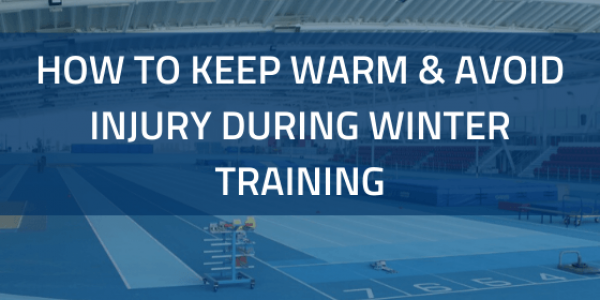Cold weather? Snow problem!
Winter is coming, but that doesn’t mean you or your clients’ training needs to freeze with it.
The clocks have gone back, it’s dark by 4.30pm and we bet you and your clients can come up with a whole host of excuses as to why you can’t work on your strength & conditioning but, don’t let the cold be one of them with our guide to winter training.
A good coach needs to be able to keep themselves warm whilst training their clients (because they’ll be doing a lot more moving than you will!) but also keep their clients performing at their best, which means injury-free!
Check the Weather Forecast
Always check the weather forecast and adjust your programme accordingly, it could be that you can re-jig your week’s training to suit the conditions, or your clients may wish to reschedule to better suitable days. Checking the forecast in advance will also help you to prepare an extended warm-up and plan how to dress appropriately.
Fuel Up
This one may be more for your clients than coaches, although I’m sure we’d all enjoy an excuse to carb load! More calories are burnt in cold temperatures so try to carb up and stay hydrated with warm drinks and snacks.
Wrap Up
Layers – Strength & Conditioning coaches are like onions, they have layers… or at least in the winter. Dress for the worst-case scenario ie. Thermals, coat, jacket and gloves are a must. Focus on keeping key areas prone to injury warm ie, knees ankles & feet.
The same goes for your clients, whilst they need to have complete freedom of movement in their outfit, we also need to ensure they are best dressed for the occasion. As coaches this is partially our responsibility to help prepare them for the session ahead; why not drop them a friendly text to remind them to layer up as you’ll be outdoors, or if your training venue is known to get cold.
It may also be worth investing in a trail shoe if sessions are outside to add extra traction on slippery, wet, icy or snowy surfaces. Another sensible addition to your workout wardrobes for both you and your clients is reflective gear, with the days and nights getting darker, visibility is critical.
Our Strength and Conditioning Expert Coach Chris Duncan said: “Opt for lots of thin layers, rather than just one or two thick ones, this will help you control your temperature better as you heat up. I’d also recommend wearing one thin pair of socks and then a thicker pair on top. Plus, don’t forget your spares, you or your clients will appreciate having those spare dry gloves – trust me! Finally asthmatics – Do NOT forget your inhaler!”
Warm-Up
The warm-up is critical in winter training and should, as usual, consist of movements that will prepare the body for the session ahead, but also cardiovascular work to start raising the body temperature and prevent injury. If the session planned is outdoors, ideally, the warm-up would be completed indoors. Remember RAMP. Cold temperatures make muscles and joints tighter, so an extended warm-up duration may be necessary.
During the Session:
Communication – Some clients will be great at telling you how their feeling and what exercises they feel have best accelerated their performance or movement, but with others, it can be like getting blood out of a stone. At all times, but particularly as it gets colder, be sure to keep adding ques to check how your clients are feeling as they perform. Whilst many injuries can be avoided by watching for visual clues, nobody knows your body as you do, so keep checking in with your clients for signs of tension or discomfort.
Form – Form wins over ego. Always. Although your clients may be tough enough to push through any training conditions, you need to really focus on form and ensure it is not sacrificed in colder climates. Performing exercises with poor form is most likely to cause injury, so it’s critical both you and the client are on the lookout.
Cool Down and Foam Roll
After a session instead of diving headfirst into a hot bath, allocate some time to cooling off and stretching. Immediately stopping the exercise and grabbing something warm can lead to rapid temperature changes. Slowly ease your client’s body temperature and heart rate back to rest with 10 minutes of light stretching, mobility work and foam rolling.
Our final thoughts? Prepare yourself. Build up a tolerance to the colder temperatures, get used to early morning training, exercising in the dark and cold, sleeping with fewer covers. Wear a hat and gloves before adding layers of clothing.
Ready to get started?
Download the brochure NOW to find out more about the L4 Award and what’s included in the 17 modules and discover the 5 bonus sections.
